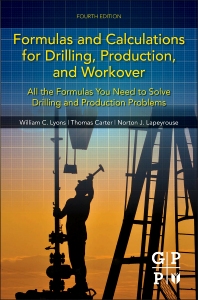
Before I discuss hammers and bits, let me first give mud drillers a few hints about mud drilling.
The first hint – and I think one of the most important – is to have a mud ring welded around the bit, just smaller than the outer cutting edge. It keeps the bit from wobbling in the hole when rotating and not drilling (making a larger hole). When coming out of the hole, the ring will slice off wall packs (boots) in the hole, allowing them to fall to the bottom of the hole, or it will pull the boot out of the hole ahead of the bit. This allows the casing and pack sand to enter the drilled hole more easily.
The second hint is to order your three- or four-blade drag bits with 8-inch to 12-inch outer reaming sides, which provide a stabilizing effect in the event you don’t run a stabilizer above the bit. This helps keep the hole straight and prevent doglegs in the hole, allowing your casing and pack sand to enter the drilled hole more easily.
The third hint is to cut several small 1⁄4-inch holes in the blade of your cuttings removal shovel (with a torch) or by having them punched (good shovel blades are too hard to drill). Such a shovel allows the removal of cuttings from the mud pit without removing the drilling mud and removes the vacuum effect on the shovel when lifting it from the mud pan. It’s helpful to use on air rigs, as well. Make your own, or these shovels are available at suppliers for less than $70. Try it; you’ll wonder why you ever drilled without one.
I’ve been a mud driller most of my life. Then some years ago, I started doing air drilling, then teaching air drilling, and later down-hole hammer drilling.
Once I learned to use the down-hole hammer, I wondered why I ever became a mud driller, except mud drilling was the norm in and around my home, Enid, Okla. I thought mud drilling was the only method for many years. Mud drilling is preferred in unconsolidated formations, but when it comes to rock (consolidated) drilling, the down-hole hammer is the preferred method today.
Many years ago, air drilling required lots of air, and air pressure of 450 cfm and 125 psi was the norm. In just a few years, more and more air and air pressure was the norm. Today, it’s not unusual to have 1,400 cfm at 350 psi and even more. Hammers and bits are becoming better and simpler as new equipment comes out.
In the winter, down-hole hammer drilling is much easier than mud rotary because there are not as many problems with water freezing. Water injection can be somewhat of a problem when it gets to be 20 degrees or less. It takes a little ingenuity, but can easily be managed.
Several years ago, I sold a company in northwestern Virginia its first down-hole hammer for earth retention walls, and they use many hammers today. However, this company doesn’t have a clue that its supervisors and operators are not well trained in the use of air, hammer drilling or drilling at all. They use 1,000 cfm air and large air lines feeding into an inlet much too small for the hammer. Unfortunately, companies like this one learn a little, and then discontinue learning and training their people further. These people waste fuel and require high maintenance on big air compressors when smaller compressors would do the job much better. They hire drillers supposedly trained by drilling colleges to drill, and pay them less than experienced drillers’ wages – and these operators don’t have a true knowledge of drilling. Everyone loses.
Recently, I’ve been experimenting with a small-diameter, low-pressure hammer for small drills. I believe there is a great demand for these small hammers. To my knowledge, these 2-inch down-hole hammers are built only in other countries at this time. I believe that, in just a few years, these small hammers will be built in the United States. I’m excited about assisting people with these hand-carry and small trailer-mounted drills to be able to drill with a down-hole hammer much easier and faster. These small hammers will be capable of drilling small-diameter water wells, fence postholes in solid rock, as well as small anchor holes for earth retention walls. We’re also experimenting with a hand-operated down-hole drill capable of drilling a 4-inch diameter hole up to 150 feet deep with little more than a tripod, a swivel, some drill stem, a small air compressor and a down-hole hammer.
Several drill manufacturers refer their customers to me when the customers are unable to drill with the equipment they purchased. Drill manufacturers often are like car dealers who assume that when people buy cars, they know how to drive them.
I’ve recently presented what I think is a very necessary, very basic drilling school where the students attend a two-day classroom and a two- to three-day on-site drilling school. I think it will fill a much-needed gap in the international drilling industry.
ND






